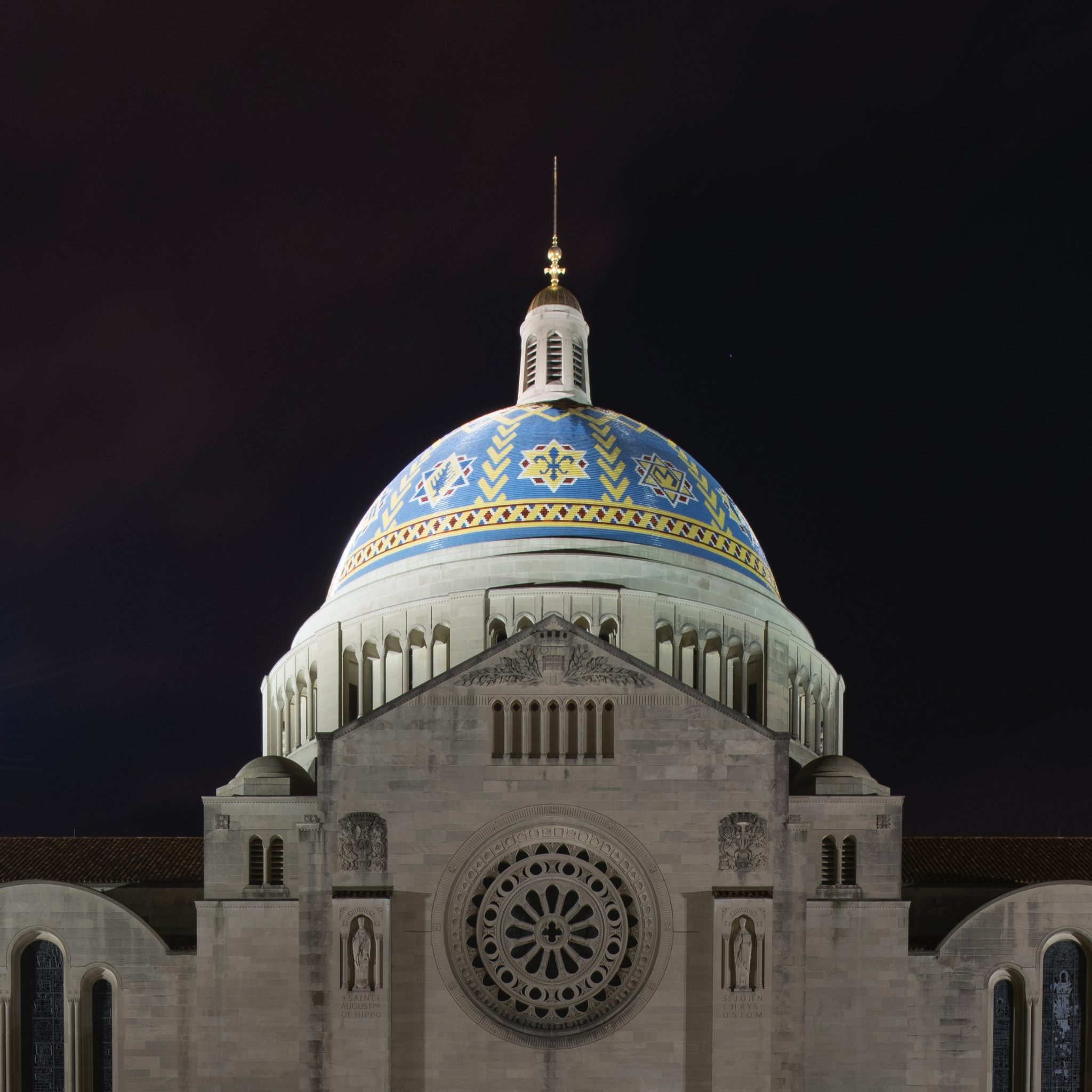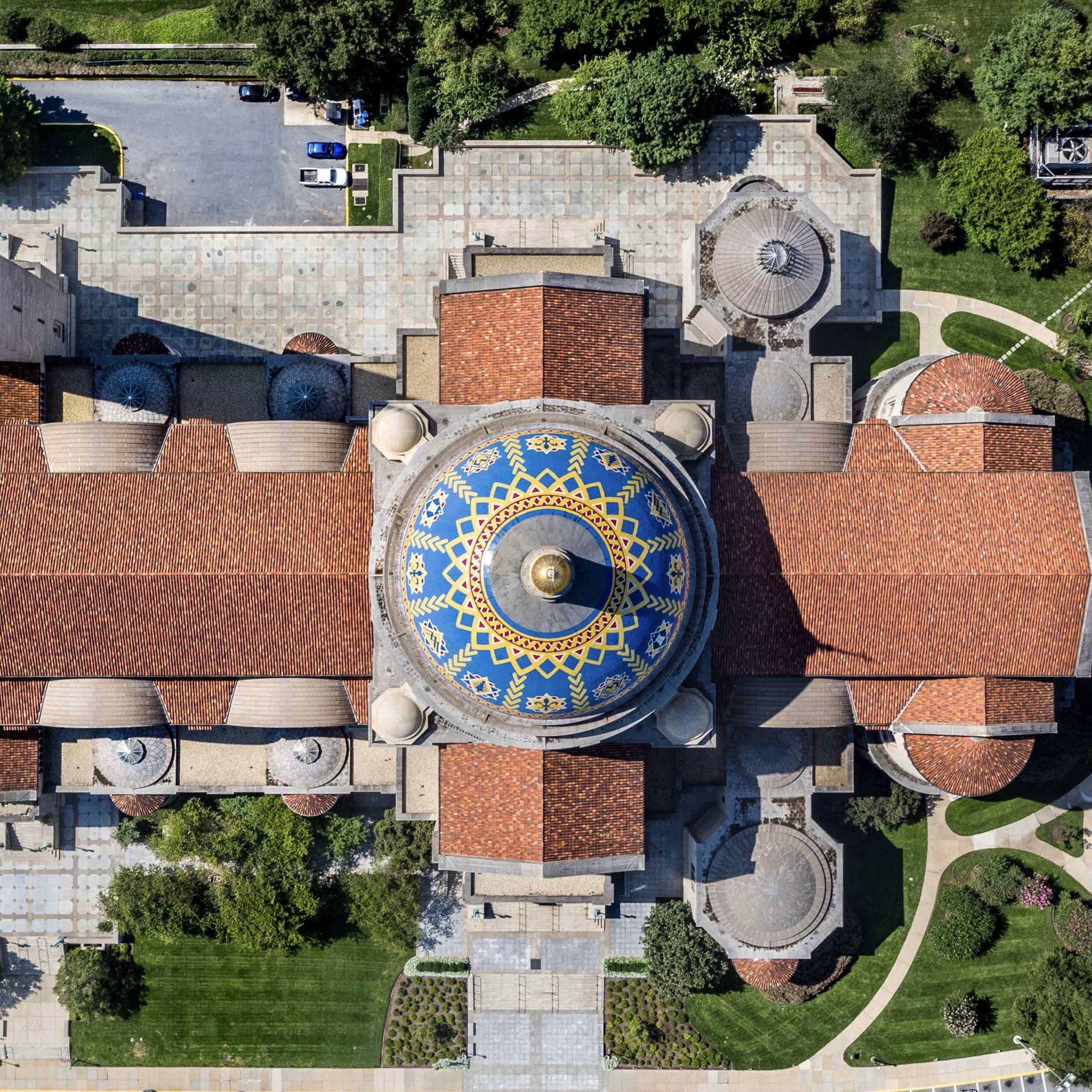
How well do you know America’s Catholic Church? Do you know how many train cars it took to haul the limestone used to build the Basilica’s exterior walls, or how tall the Knights Tower Carillon is?
Built by generations of faithful American Catholics to honor the patroness of our nation, the National Shrine has been more than 100 years in the making. In today’s post, learn more about the construction process and discover 10 fun facts about the architecture of the Basilica.

36,000 ft. (6 miles) of pipes wind their way beneath the Basilica’s floors.
Running under 50,000 sq. ft. of marble flooring, these ensure the radiant heating system keeps the space comfortable for visitors.

The Trinity Dome was created with over 14 million individual tile pieces.
Called the “crowning jewel” of the National Shrine, the Trinity Dome mosaic was the final major installation at America’s Catholic Church. Each of its tesserae was initially shaped using a hammer and chisel. Since every tile was created for a specific place on the mosaic, if the tile broke incorrectly while being chiselled, the artisan had to take another piece of glass and begin the process again.

The diameter of the Great Dome is 108 feet.
Covered in glistening polychrome tiles, the Great Dome is not only visually stunning, but a physical representation of spiritual truths. It features Marian symbols, each within a six-pointed Star of David, which represents the royal House of David, the Judaic lineage of Mary.

The highest point of the Basilica pierces the sky at 329 feet.
The geographical location of the Knights Tower causes it to rise nearly as high as the Washington Monument. The tower is home to a carillon composed of 56 bells, which together weigh a combined 37,150 pounds!

350 train car loads were used to haul all of the Indiana Limestone for the exterior walls of the Basilica.
Though the Crypt Church was finished by 1931, construction for the rest of the Shrine ground to a halt due to the death of Bishop Shahan and various other factors. Construction resumed during the Marian Year 1953-1954. Bishop John F. Noll of Fort Wayne was instrumental in renewing interest in the project across the nation. Howard G. Hall, consultant to Archbishop O’Boyle, reported in October of 1955 that forty-five laborers, sixteen carpenters, eight foremen, eight miscellaneous staff, six brick masons, three truck drivers, two cement finishers, two crane operators, two oilers and one compressor operator were onsite for the project, which would be completed in 1959.

36,500 watts of electricity are used to light the Great Dome.
That electricity powers the 55 spotlights keeping this architectural hallmark of America’s Catholic Church visible at night. 608 standard 60-watt incandescent fixtures would be needed to generate the same amount of light!

The Great Upper Church can hold up to 6,000 people.
However, the Basilica has hosted even greater crowds in the past – for the canonization Mass of Junípero Serra, the Basilica’s East Portico was transformed into a beautiful sanctuary to host a congregation of 25,000 faithful from across the United States!

10,000 cubic yards of concrete were used in the Shrine’s construction.
The Basilica is constructed entirely of stone, brick, tile, and mortar—without structural steel beams, framework, or columns. This architectural framework allowed the space to still be used by the faithful of America as it continued on the long road to completion.

The gross floor area of the Basilica is 206,308 square feet!
The National Shrine stands as our nation’s preeminent Marian shrine and patronal church, rivaling the great sanctuaries of Europe and the world, not only in size and stature, but also in beauty, dignity and sanctity. It is the largest Roman Catholic church in North America, and among the ten largest churches in the world.

11.5 million bricks were laid to build America’s Catholic Church.
To achieve an original design that was “sunk in tradition yet distinctively American,” architects chose a Romanesque-Byzantine style for the National Shrine. While Byzantine architecture is noted for the distinctive dome, Romanesque architecture is defined by its massive size, thick walls, arches, piers, groin vaults, towers and ornamented ambulatories. At the National Shrine, many of these elements are composed, at least in part, of bricks – with a total of 1,500,000 pieces of face brick and 10 million pieces of common brick.
Sources:
Rohling, Geraldine M., PhD, MAEd. The Basilica of the National Shrine of the Immaculate Conception: Guide and Tour Book. Washington, D.C.: Basilica of the National Shrine of the Immaculate Conception, 2018.
Rohling, Geraldine M., PhD, MAEd. Jubilee 2009: A Photographic History of the Basilica of the National Shrine of the Immaculate Conception.

